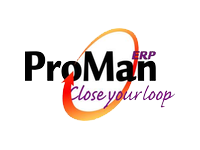Your PROMAN-erp system supports collecting information for non-production activities in the plant. There are a number of items that fit into this category, such as:
- R&D – tax credit tracking
- Process Improvement
- Capital Projects
- Proto-Typing
- Planned Maintenance
- Warranty work
- Field work
- many others
Regardless of the use, your system has the ability to create a special work order. This can contain some of the same characteristics of a production work order. There can be components (spare parts for machine repair), and labor collection (sequences for different labor categories). The primary difference is that no part is completed and put into inventory, and the expenses no longer go into WIP, but go to a defined expense GL account (perhaps construction in process).
The work orders interact with the balance of the system. Component parts can be handled by MRP and your inventory process, collection of labor can be identical to production work orders, and sub-contracting can be purchased to this type of work order. This allows the special work order to fit seamlessly into your work flow through out the company.
Our system allows the use of master type parts that can define work order characteristics (similar to a template). This allows you to track all sorts of cost to these activities and these are connected to all sections of your PROMAN-erp system.
First, you can have a picklist of components, added from your referenced part number. This drives inventory and MRP just as any production order would. Stockroom people can issue parts just as they would to a production order, including issuing special parts as needed.
The special work order can have sequences for labor collection, that can represent cost buckets and/or actual work sequences. Employees will be able to charge time to these sequences, exactly like they do for production. These sequences can show up on the shop floor system, so that people on the floor are aware of this activity. The shop floor manager can easily spot planned machine maintenance and other activities that might affect their planned capacity.
Purchasing can add line items that can be charged to the special work order, either in a material bucket or a sub-contract bucket. This allows the purchase order to interact with the system exactly the same way as it does for a production order.
All of the cost can be posted to the expense account all the time, or at the end of the project. Accounting will always have the full details of the cost components for reference.
The goal of this process in the system is to allow the user to plan, track, and close activities in the system while having all of the activities interact seamlessly in the system.
